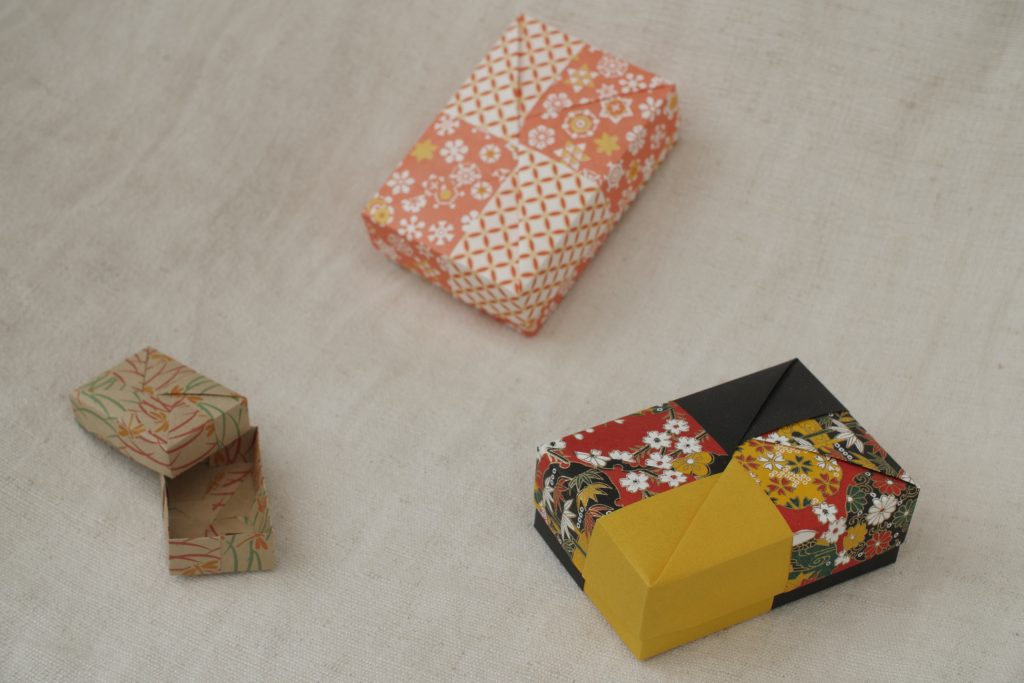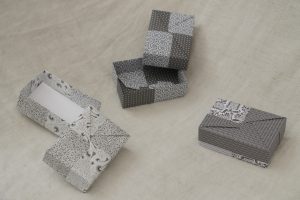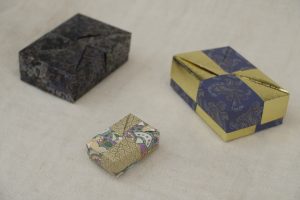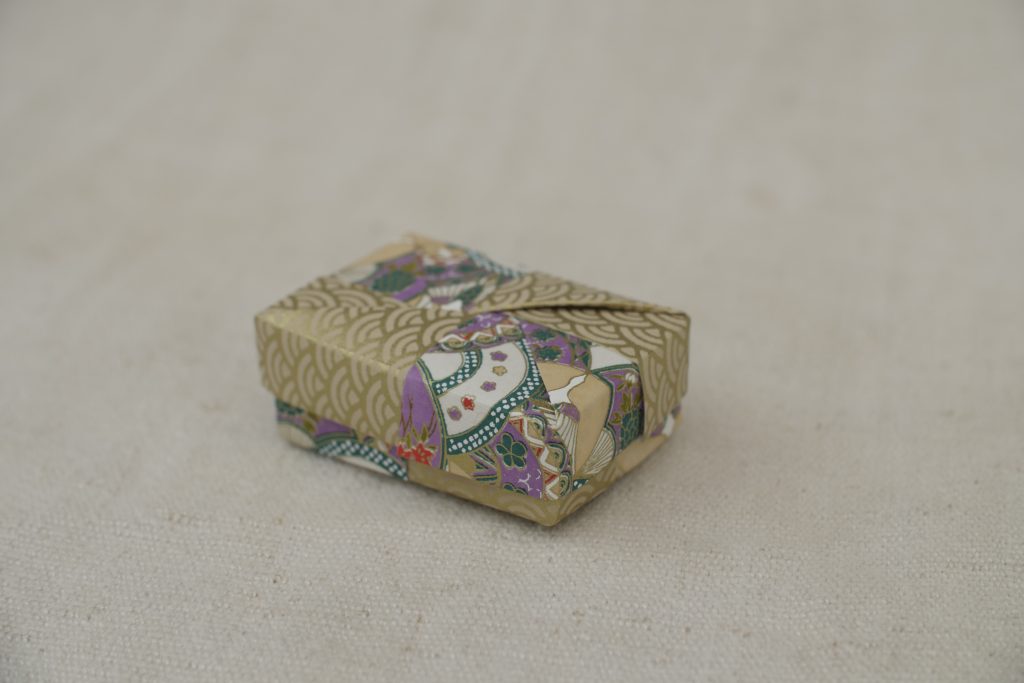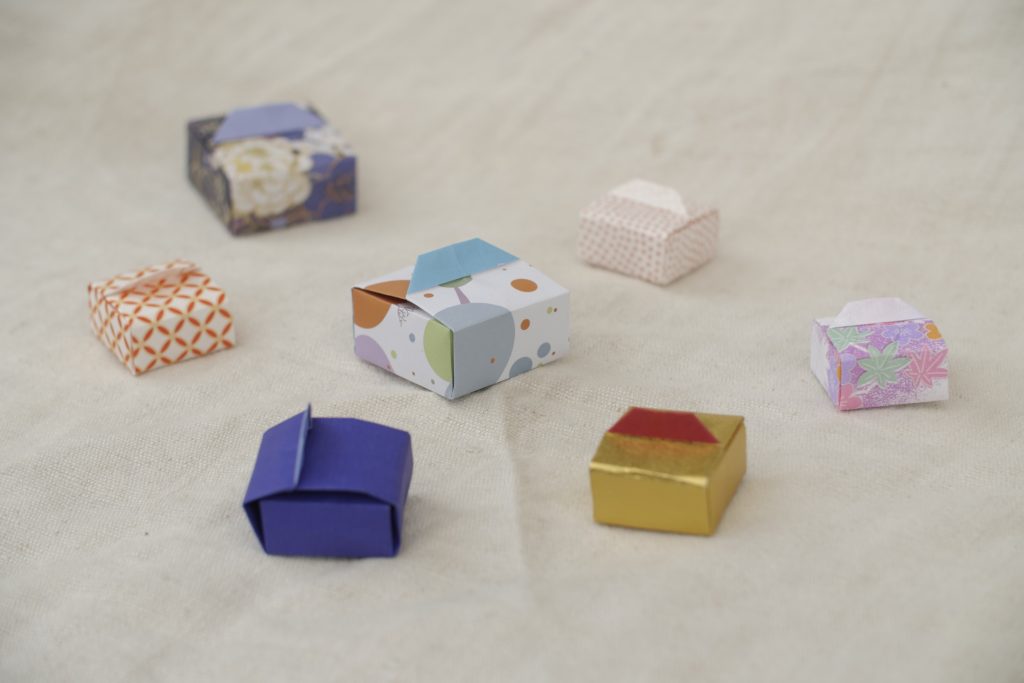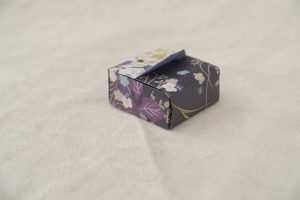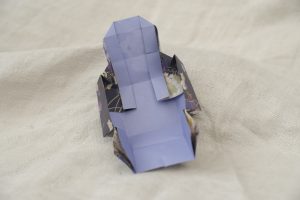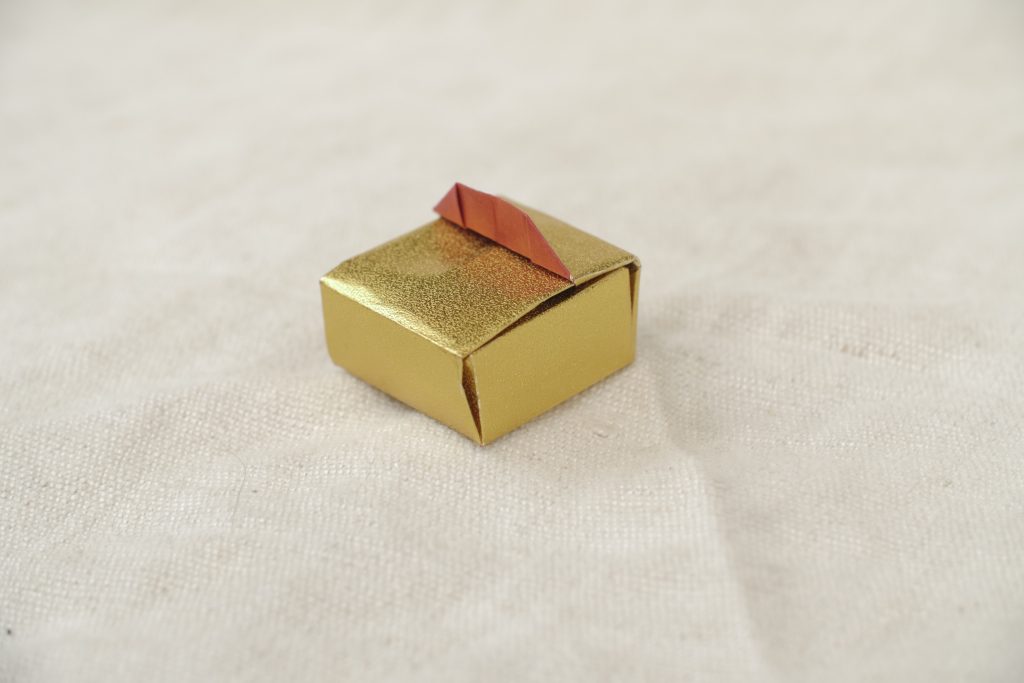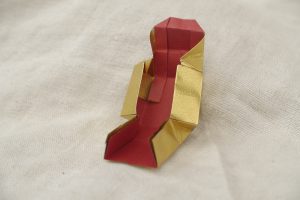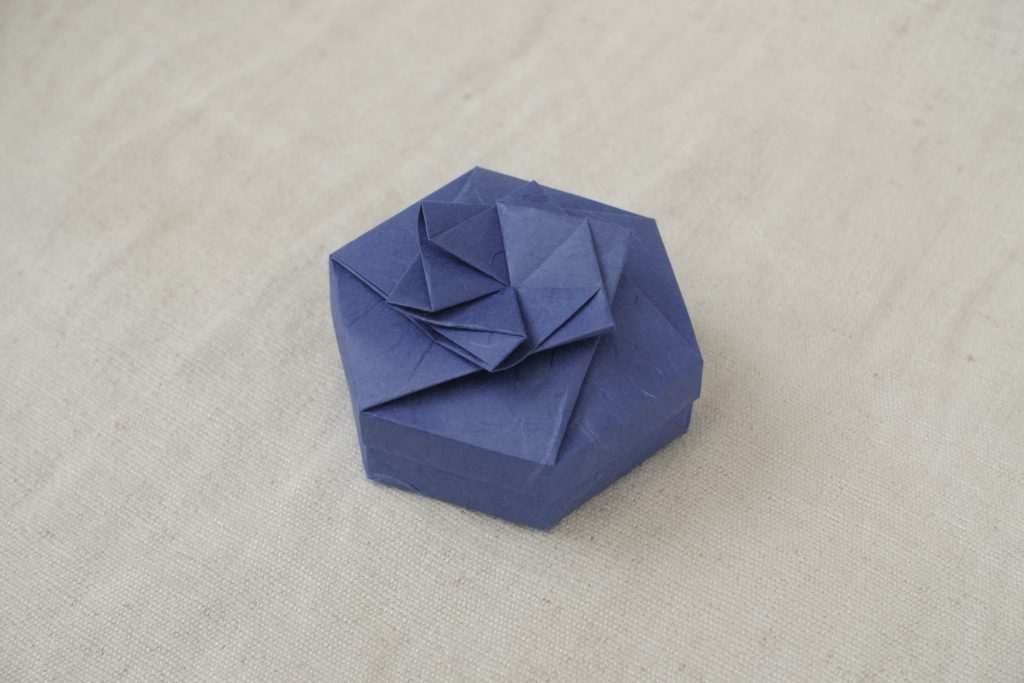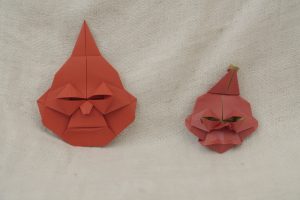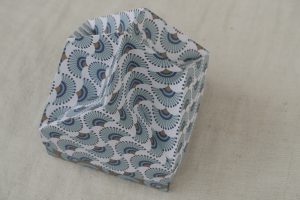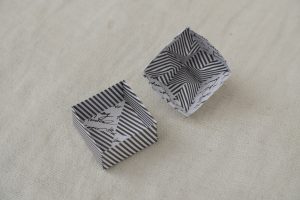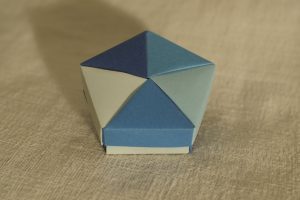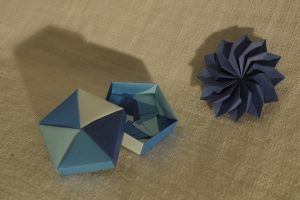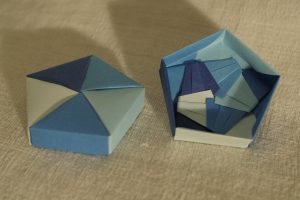I already showed this beautiful box by Tomoko Fusè, but here is the variation I made, where the star is on the outside. No idea if this is published somewhere, since I don’t own the book with the model – but it’s really straightforward to find once you’ve folded the first model.
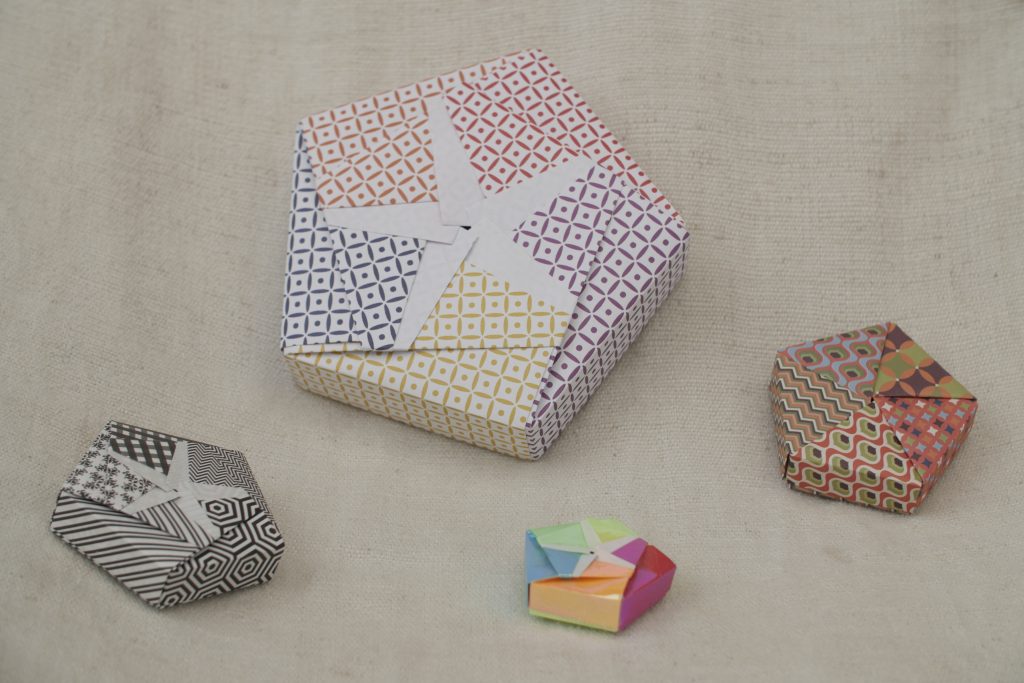
Papers: top, Origami Antistress by Marabout 15cm (beware, those 1000-sheets books don’t have perfectly square sheets and you usually have to cut them again, but I love the colors and patterns) ; bottom left, Origami black and white by Aitoh 7.5 cm ; middle, cheap shinny 5cm paper bought on ebay : right, Origami mini Pop 7.5 cm by Avenue Mandarine.

As I said before, if someone knows the references of the book, I’m interested :)
Edit: Internet’s magic is working ! Michel Grand just wrote to me to say the diagram is in “Origami Gift Boxes”, ISBN 9784140310687 (in japanese). Thank you :)

